
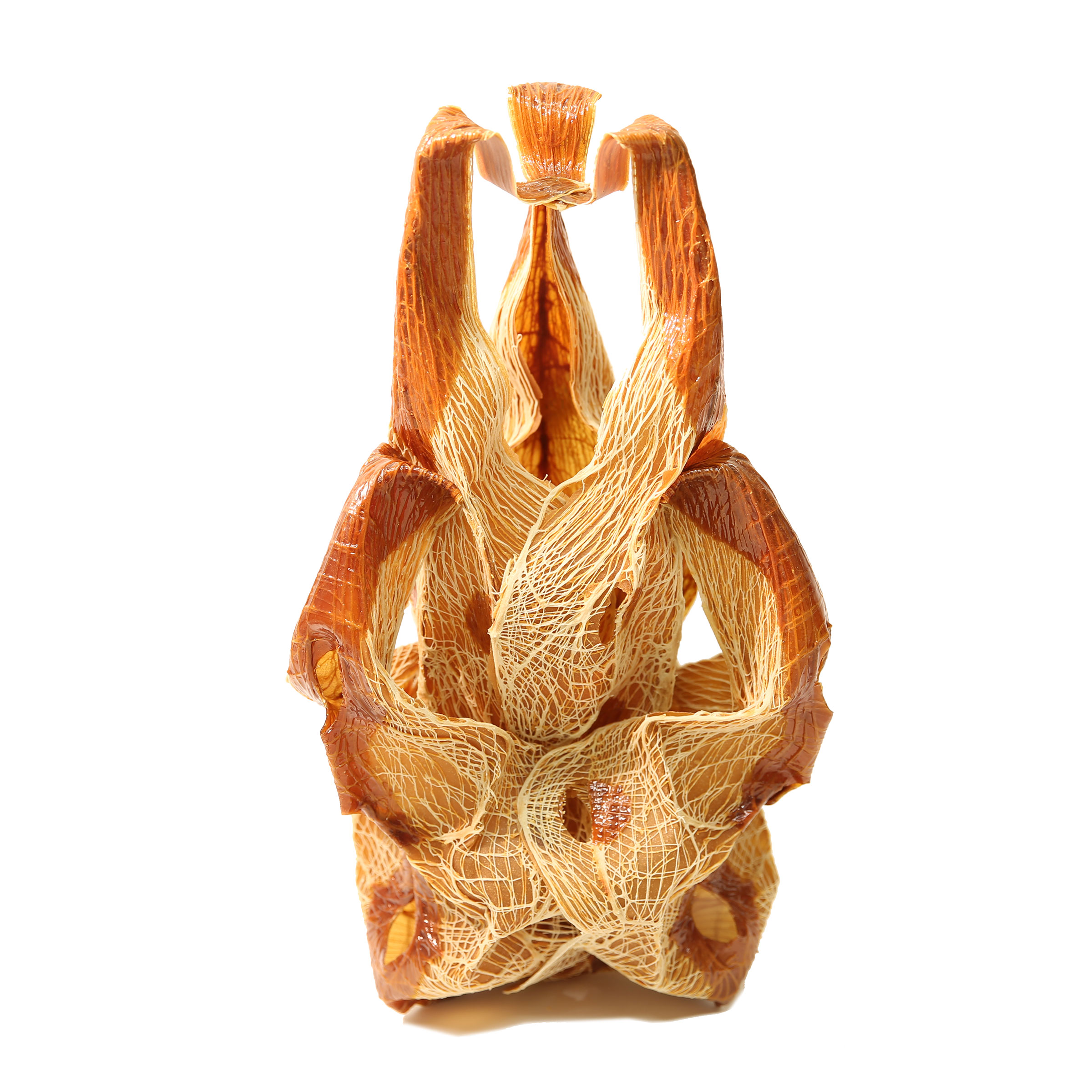


Figure I: Comparison of the deformation and color change of radially aggregated and folded biopolymer prints aged over 1 year with different 2-dimensional geometries and 3-dimensional forms.

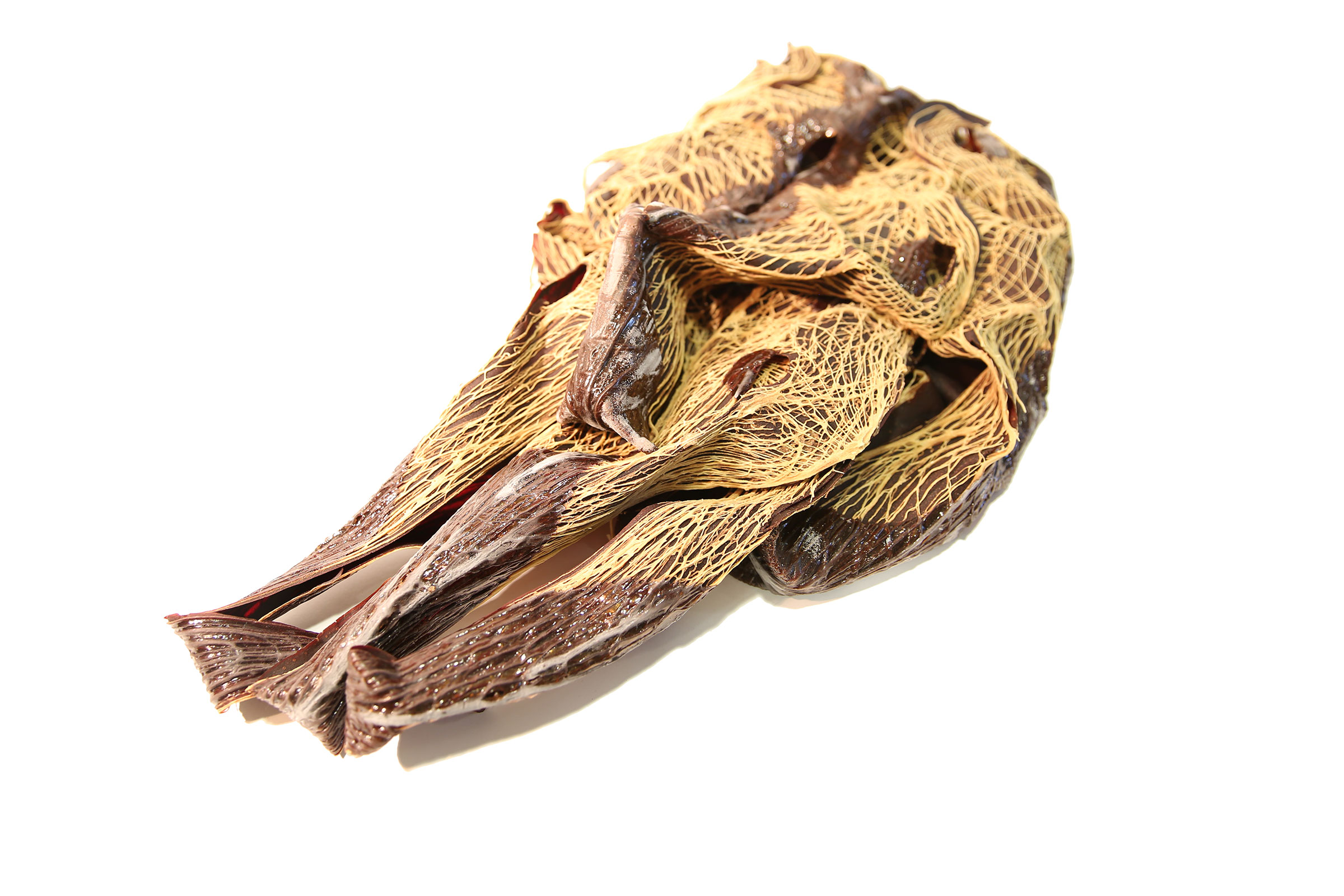



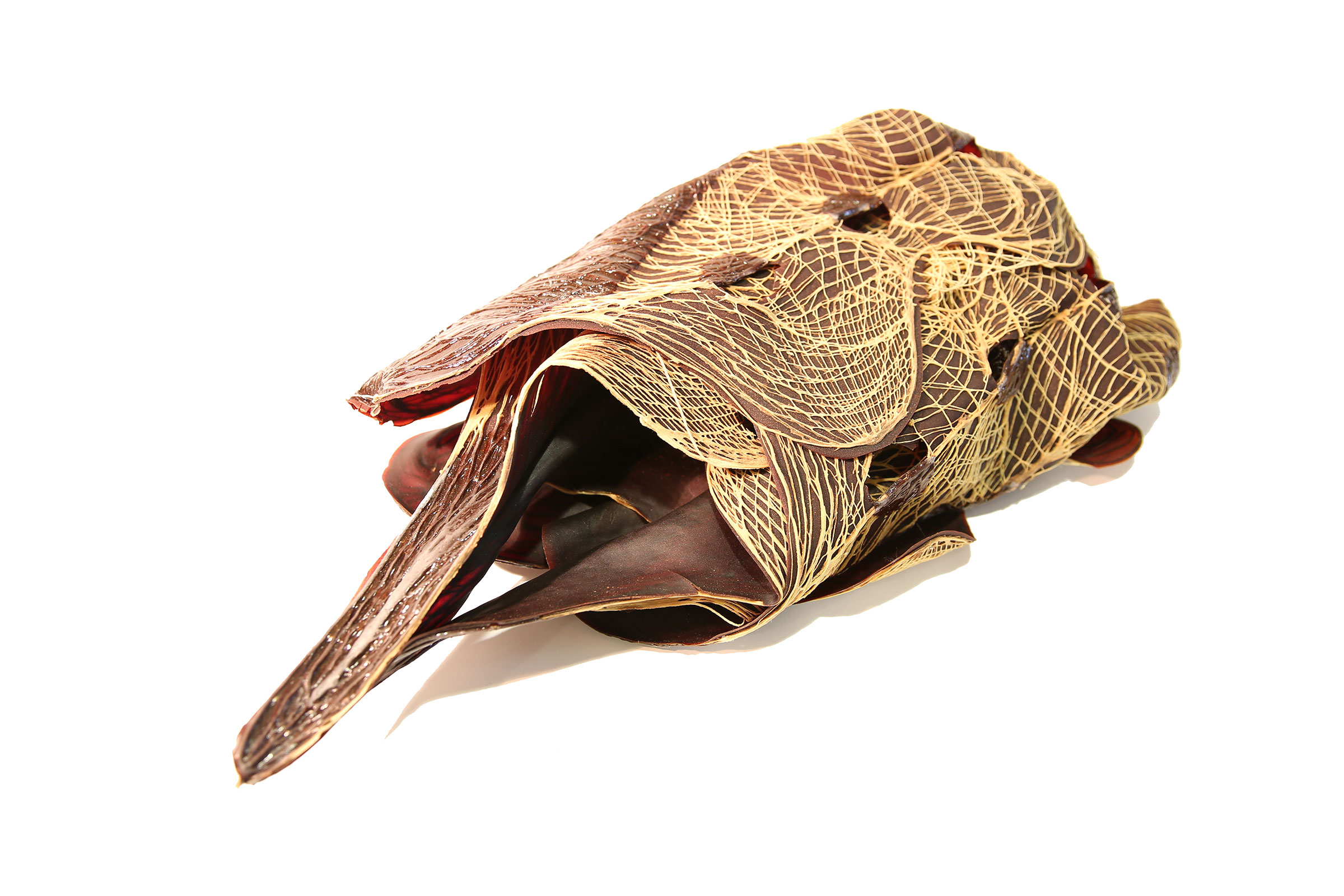

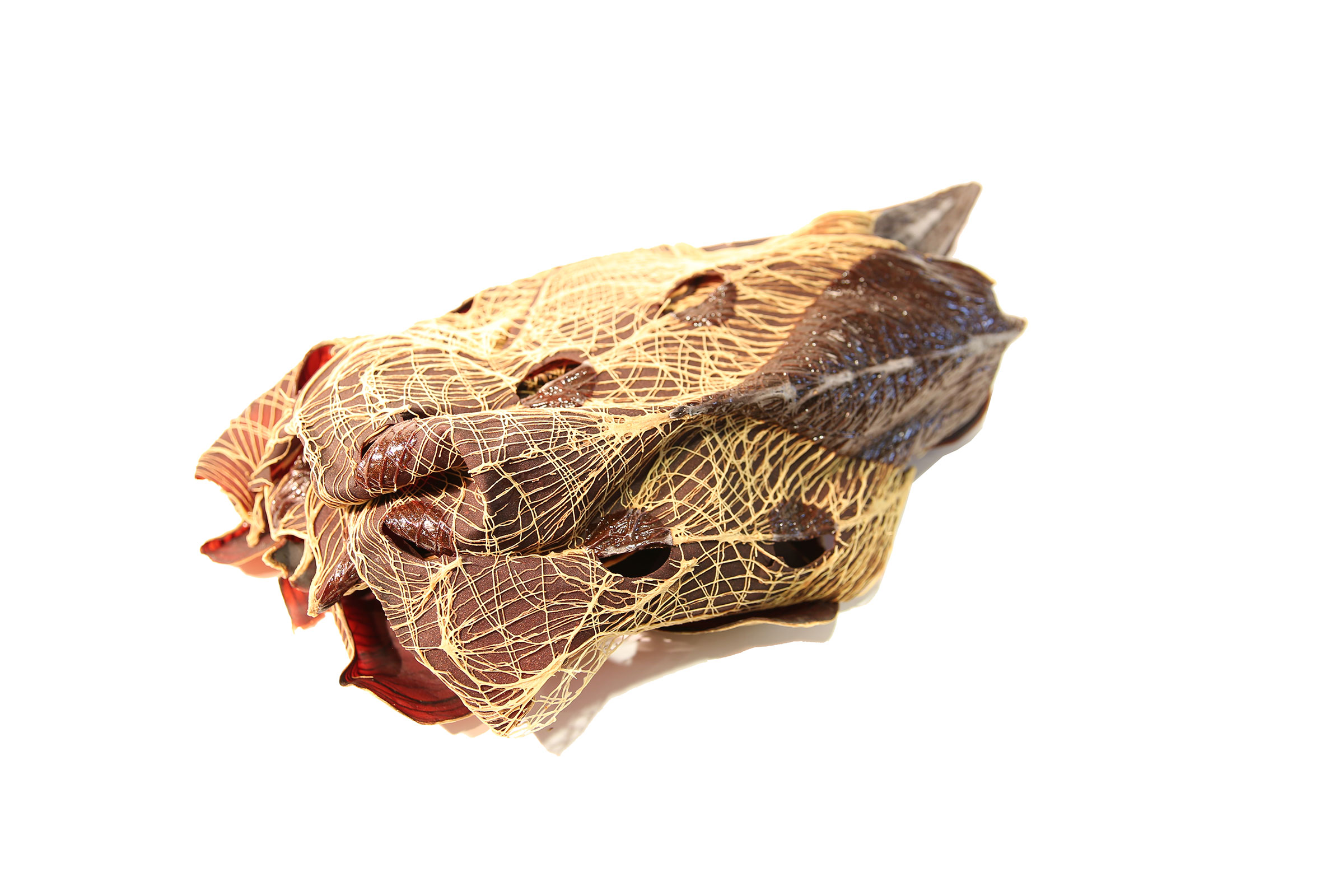
Figure II: A series of bilaterally symmetric prints are composed of a pectin chitosan infill base layer with a cellulose lattice surface layer. The cellulose surface layer is generated to align to specific vectors that encourage creasing the surfaces along predefined ridges. Two sets of 3 identical prints are clamped along the wetted central pectin spine to adhere all surfaces together.
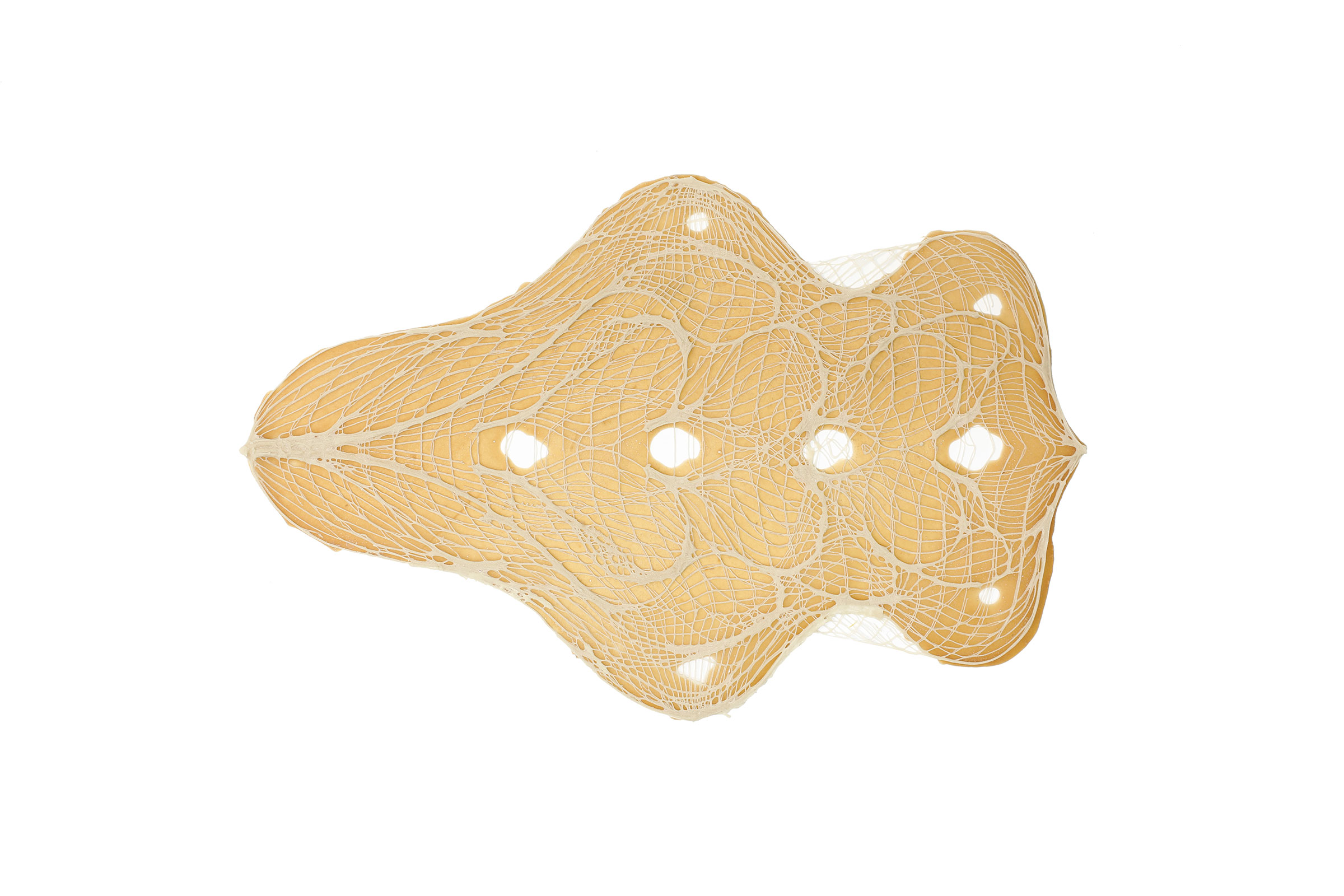

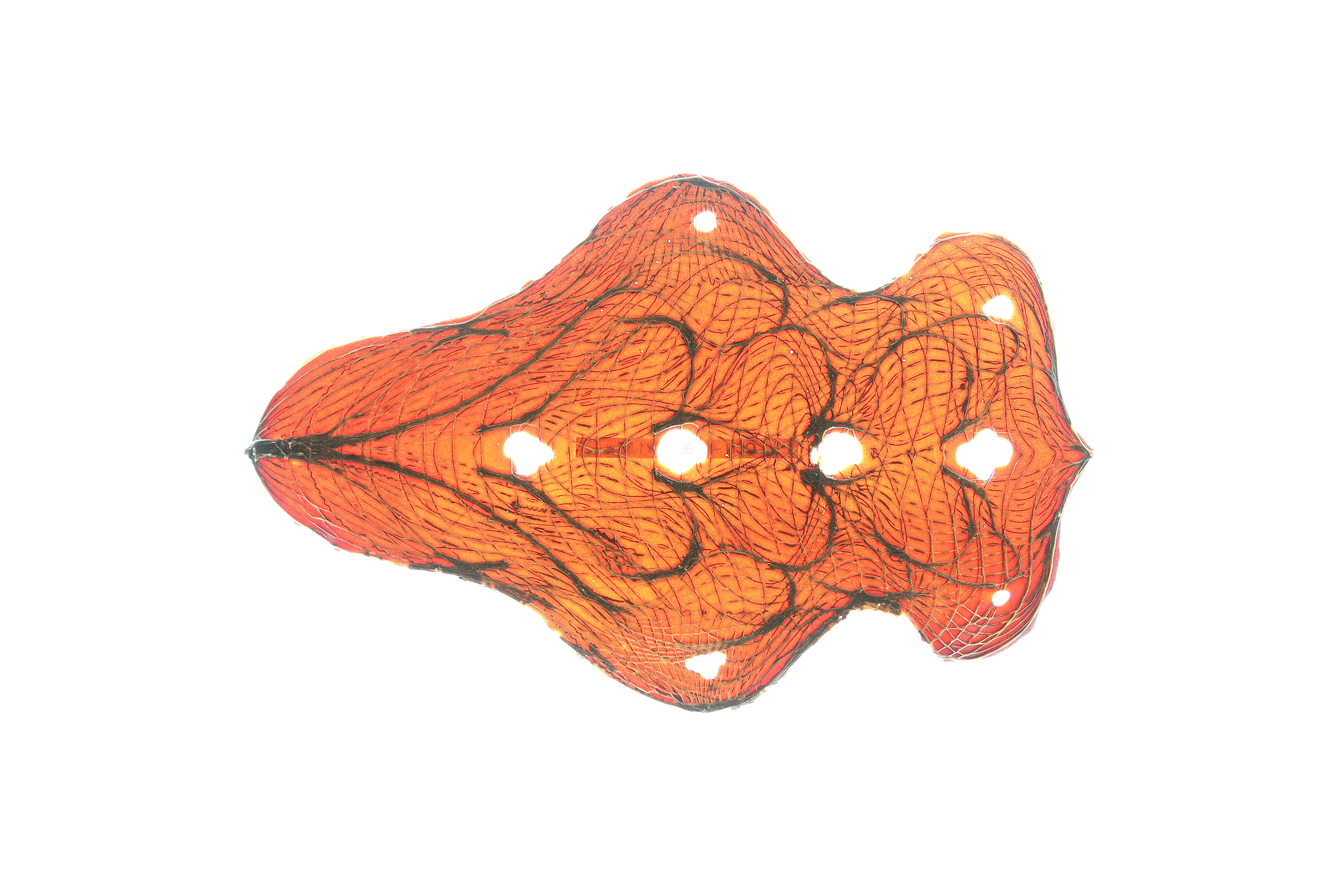

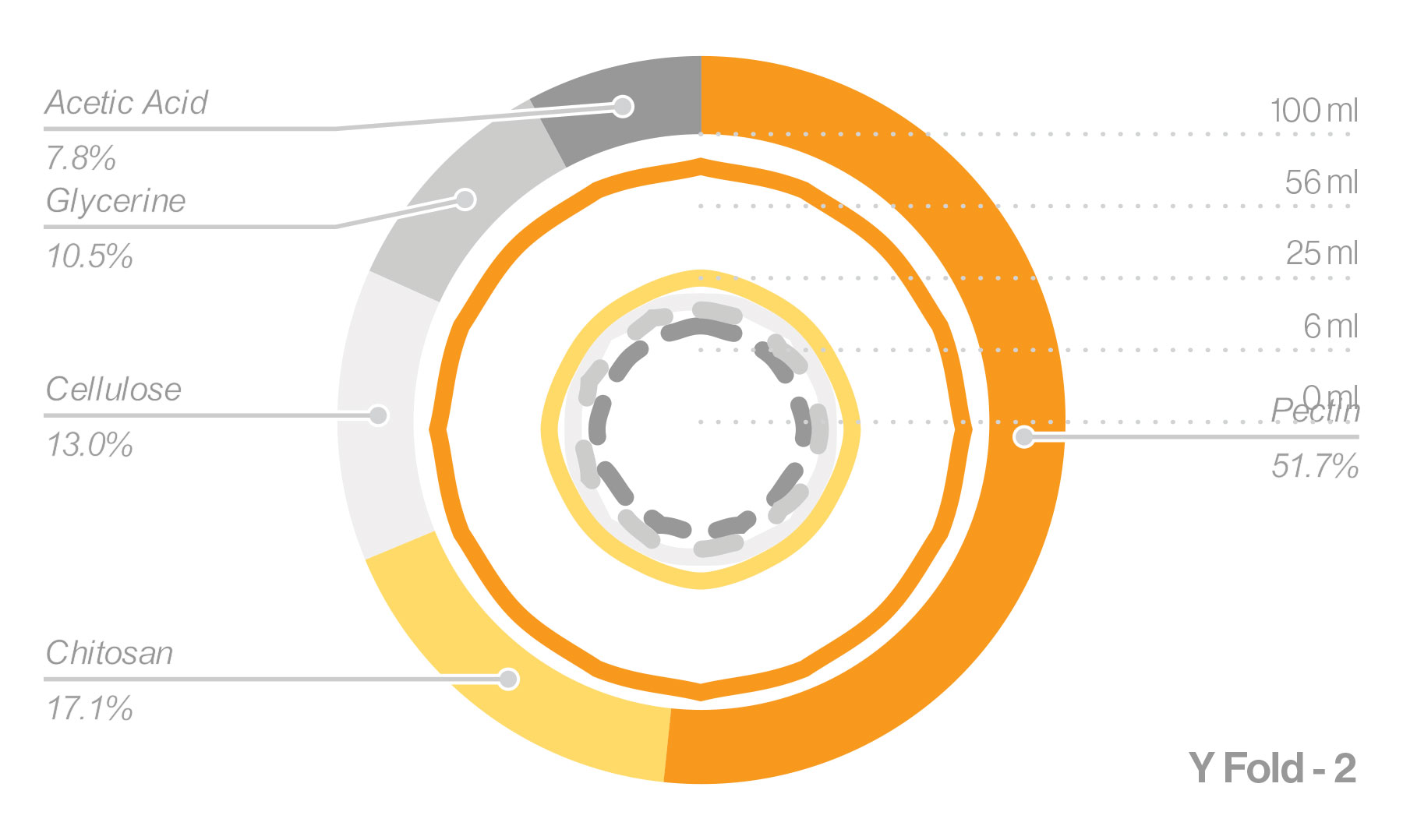
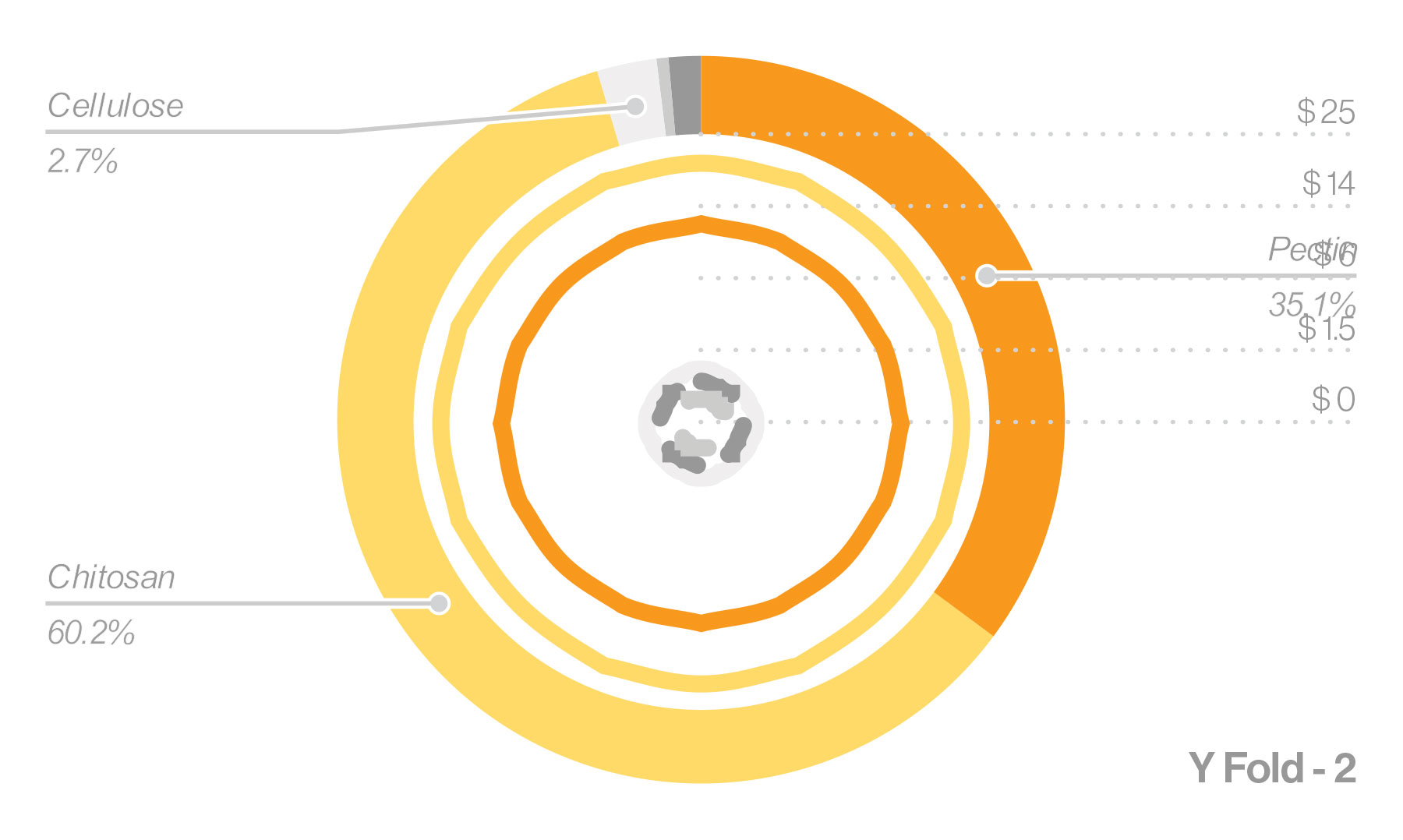
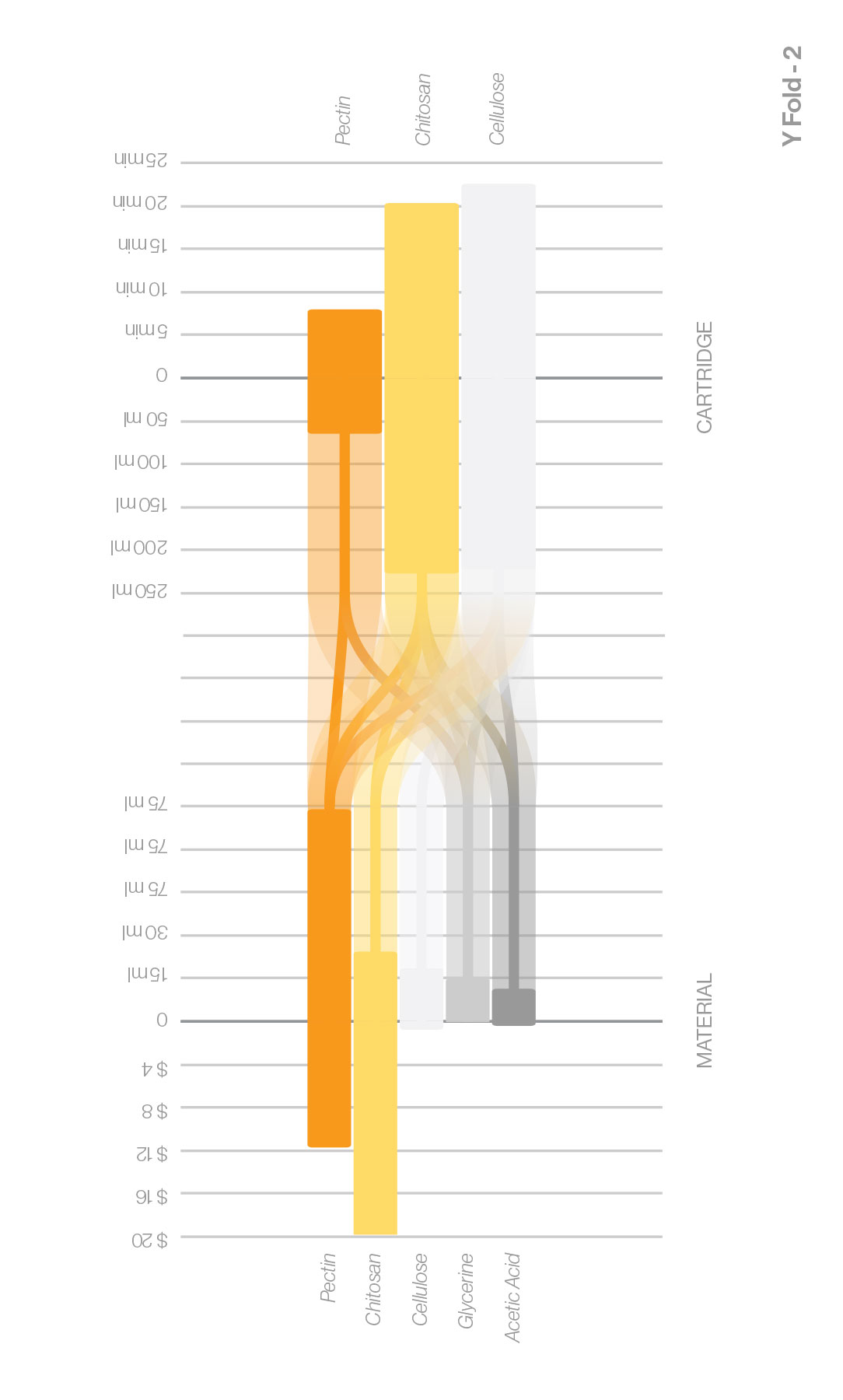
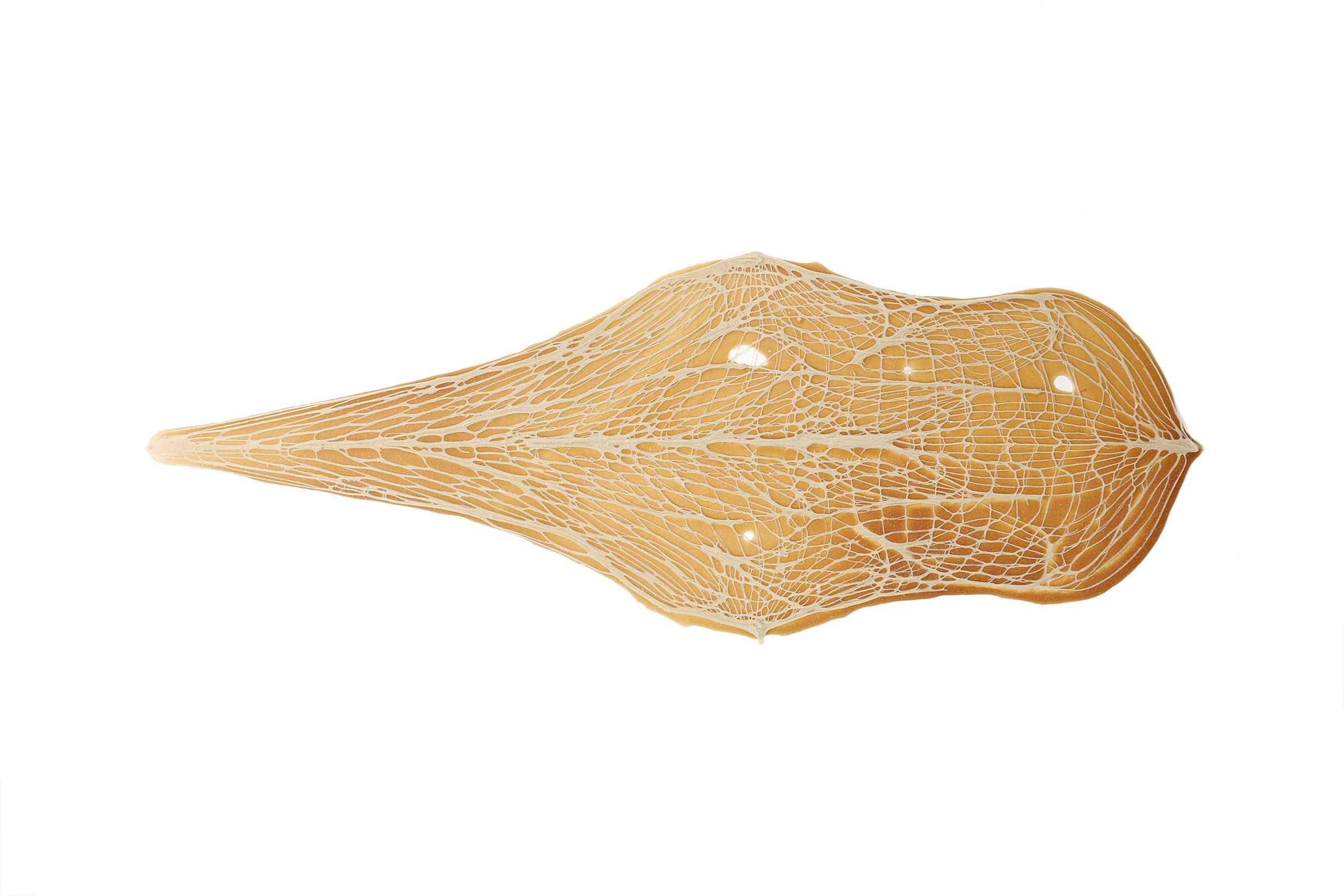
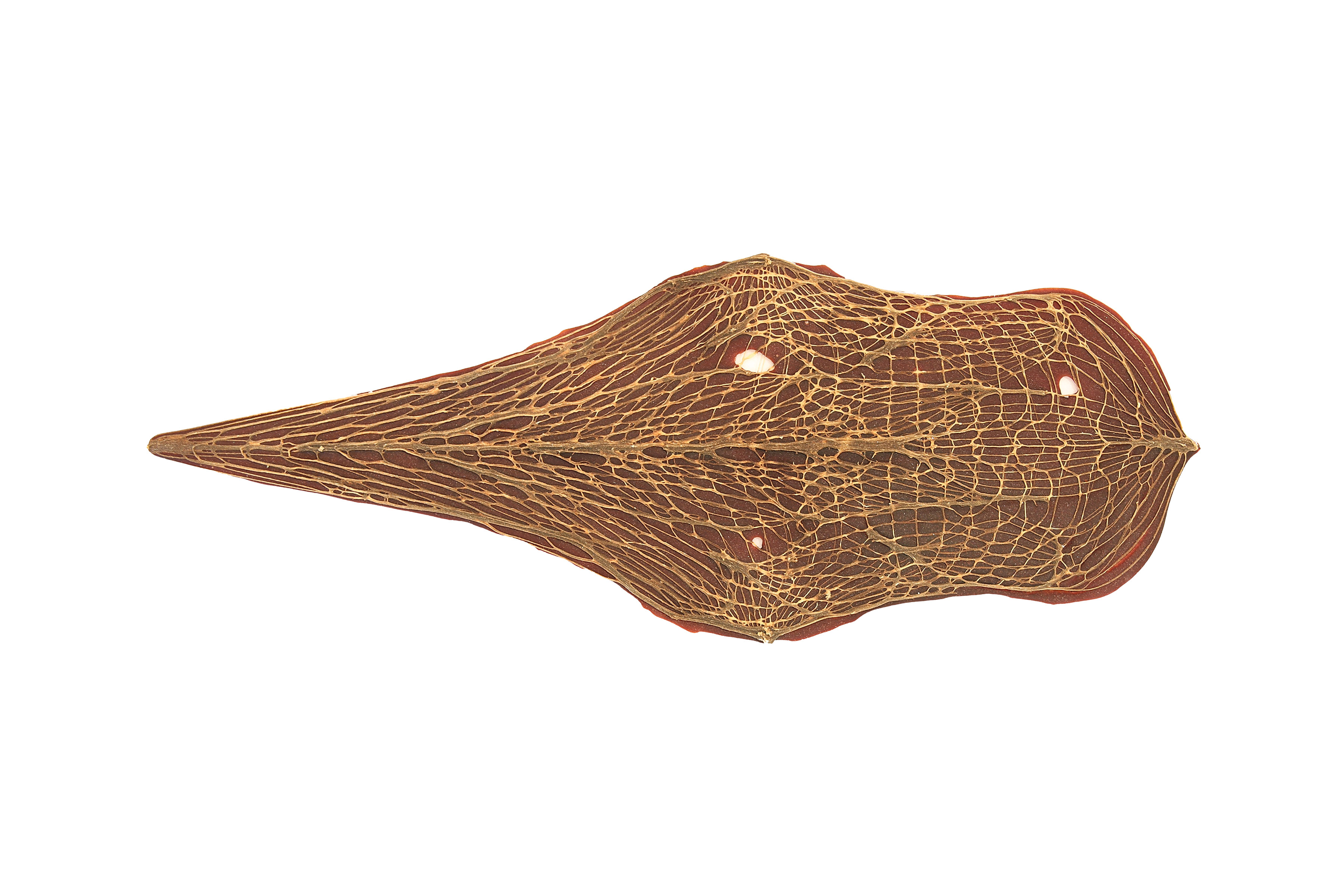
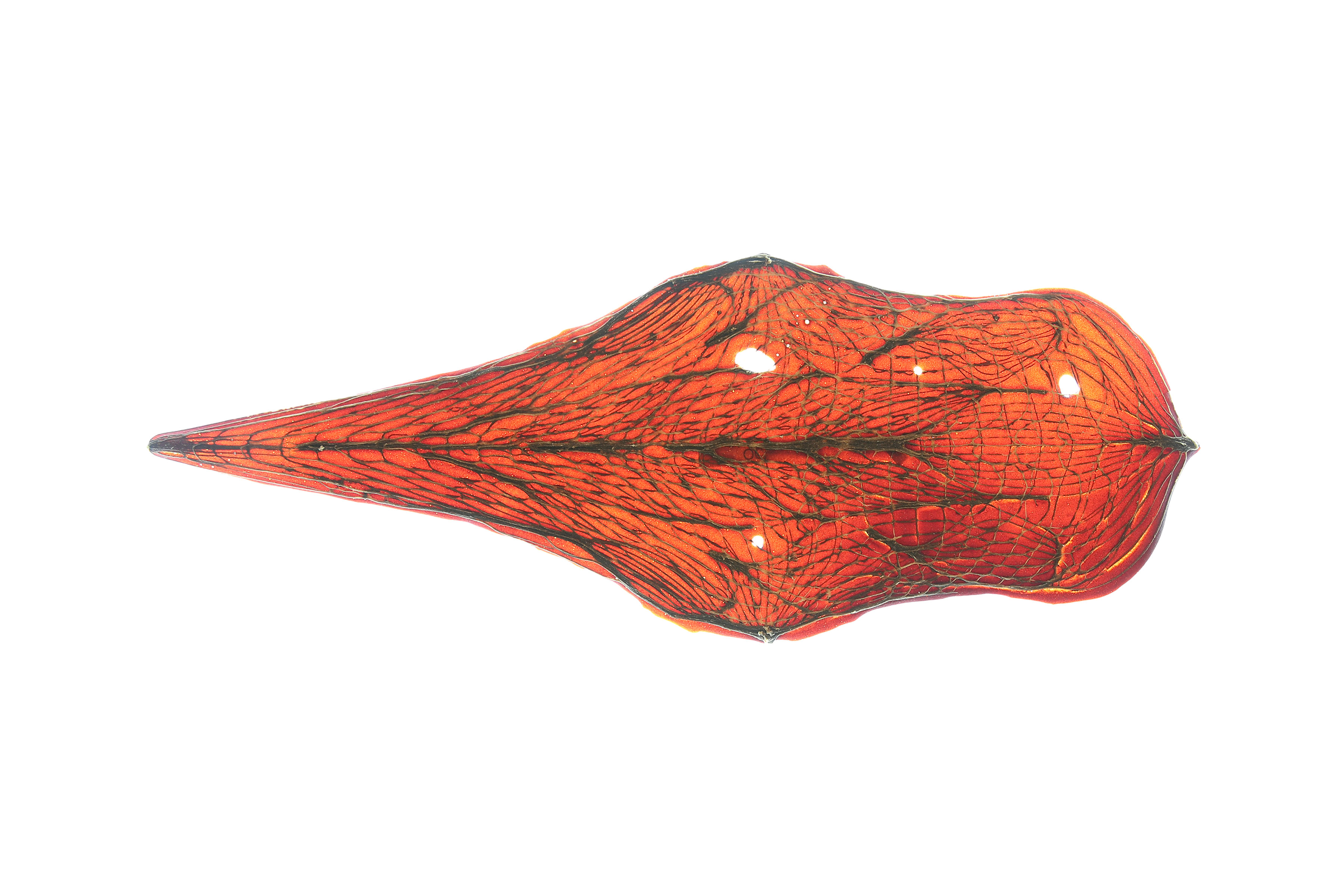
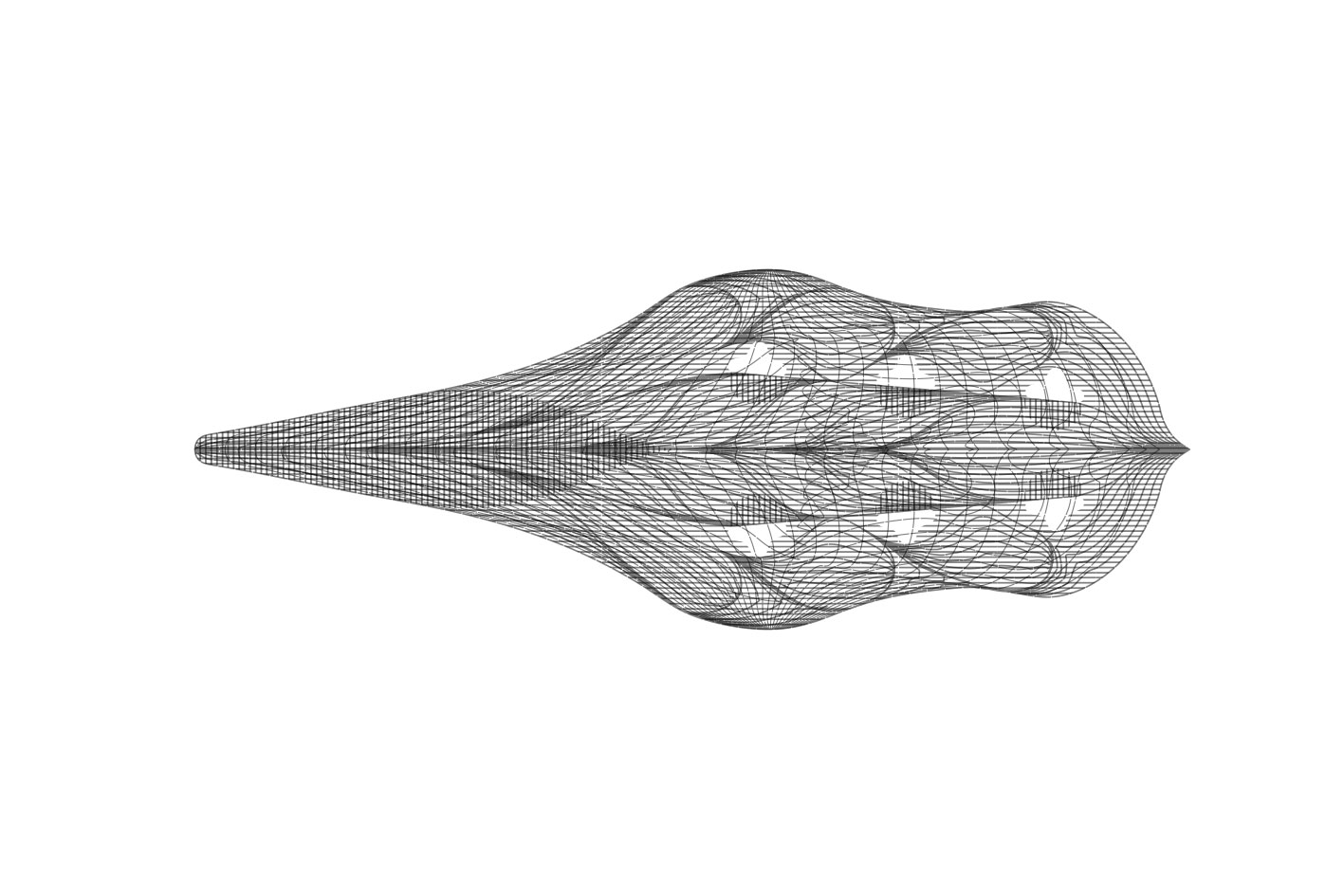
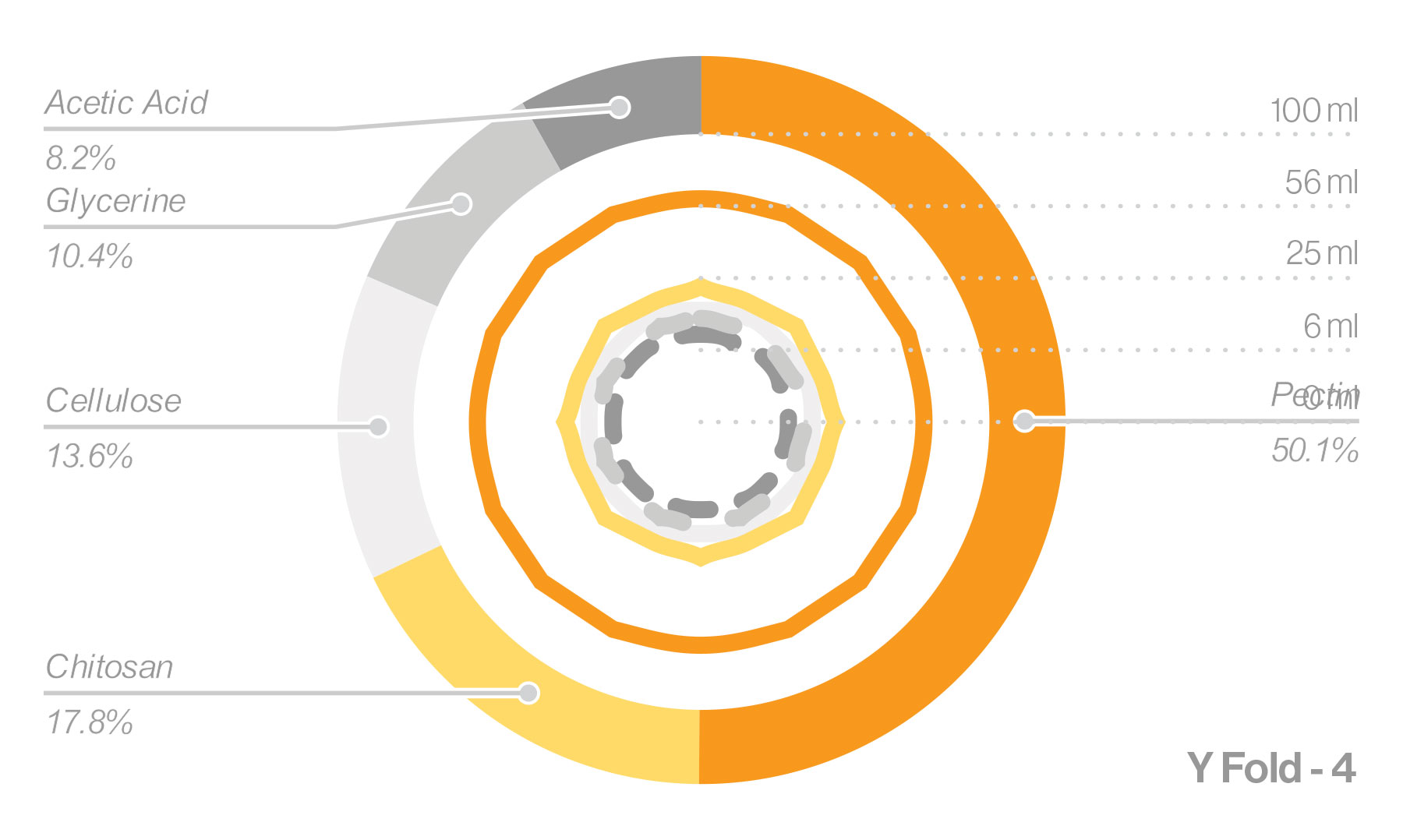
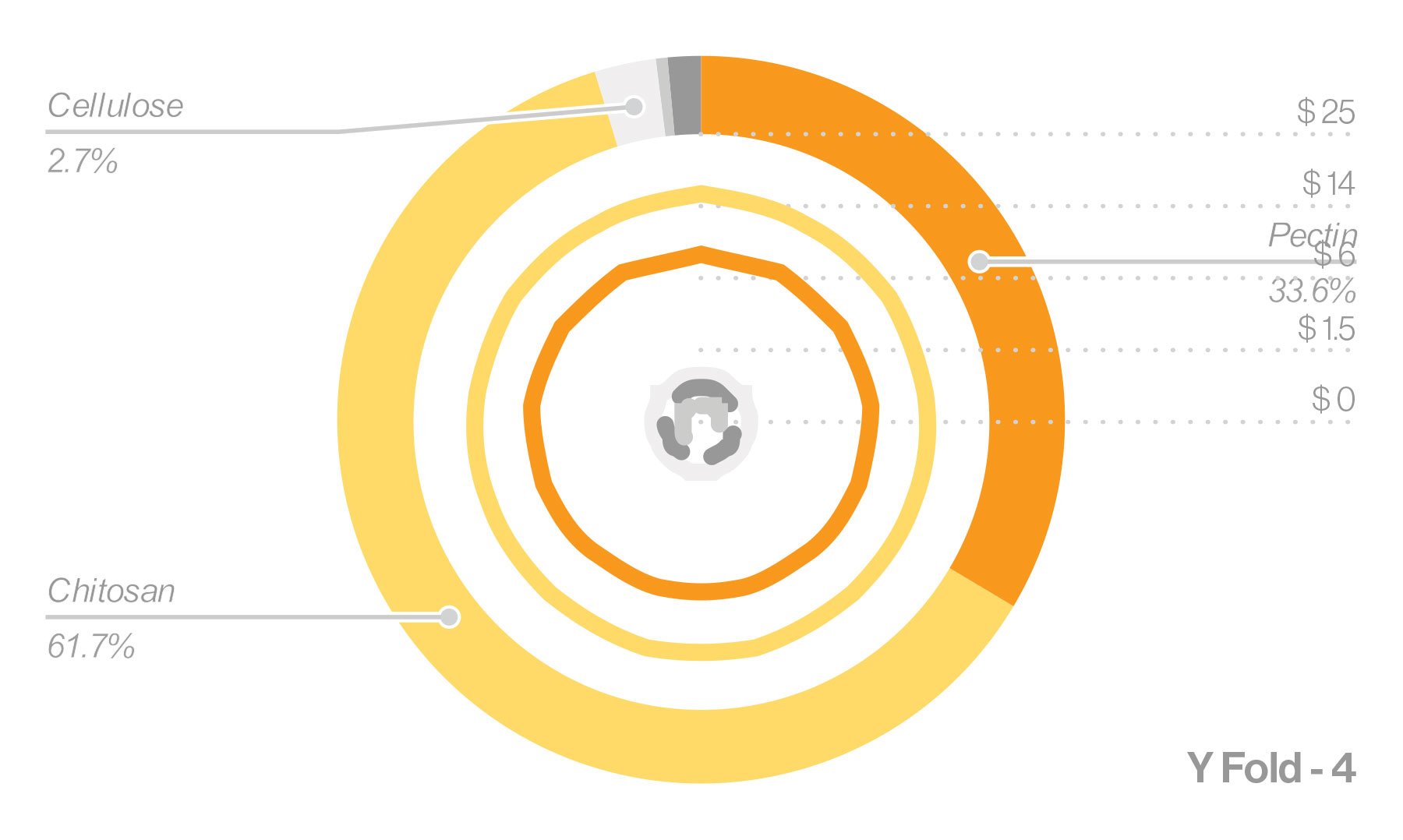
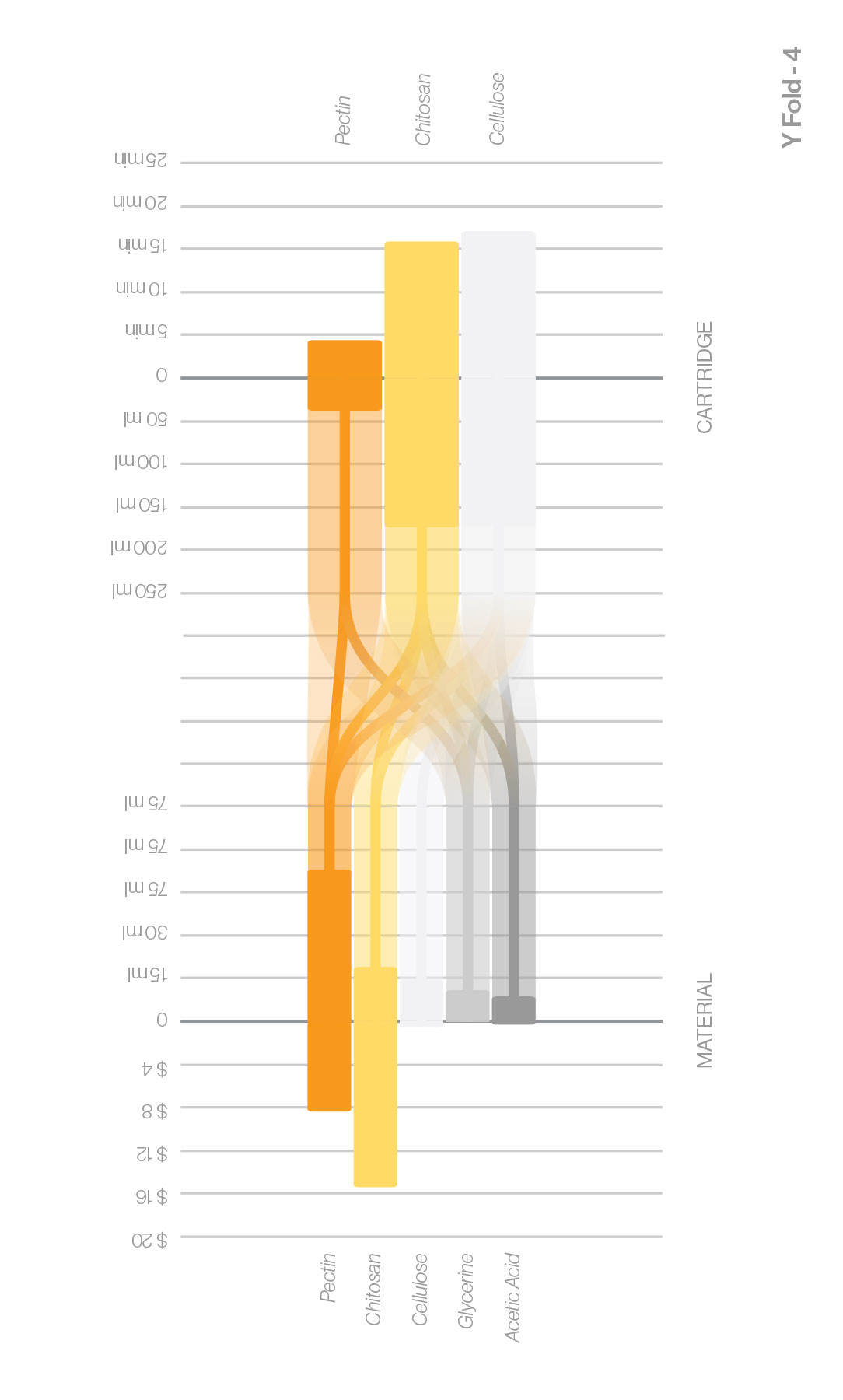




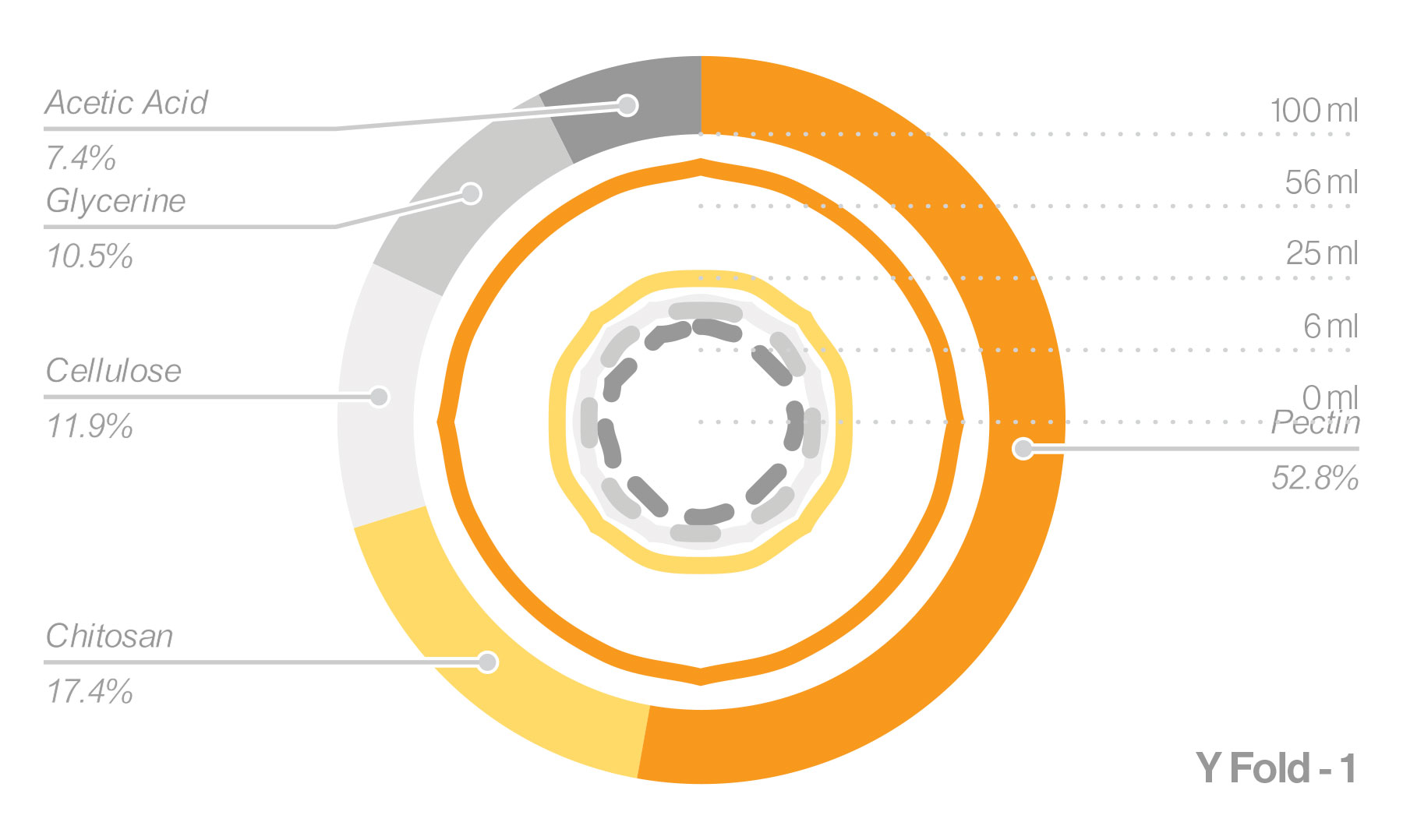

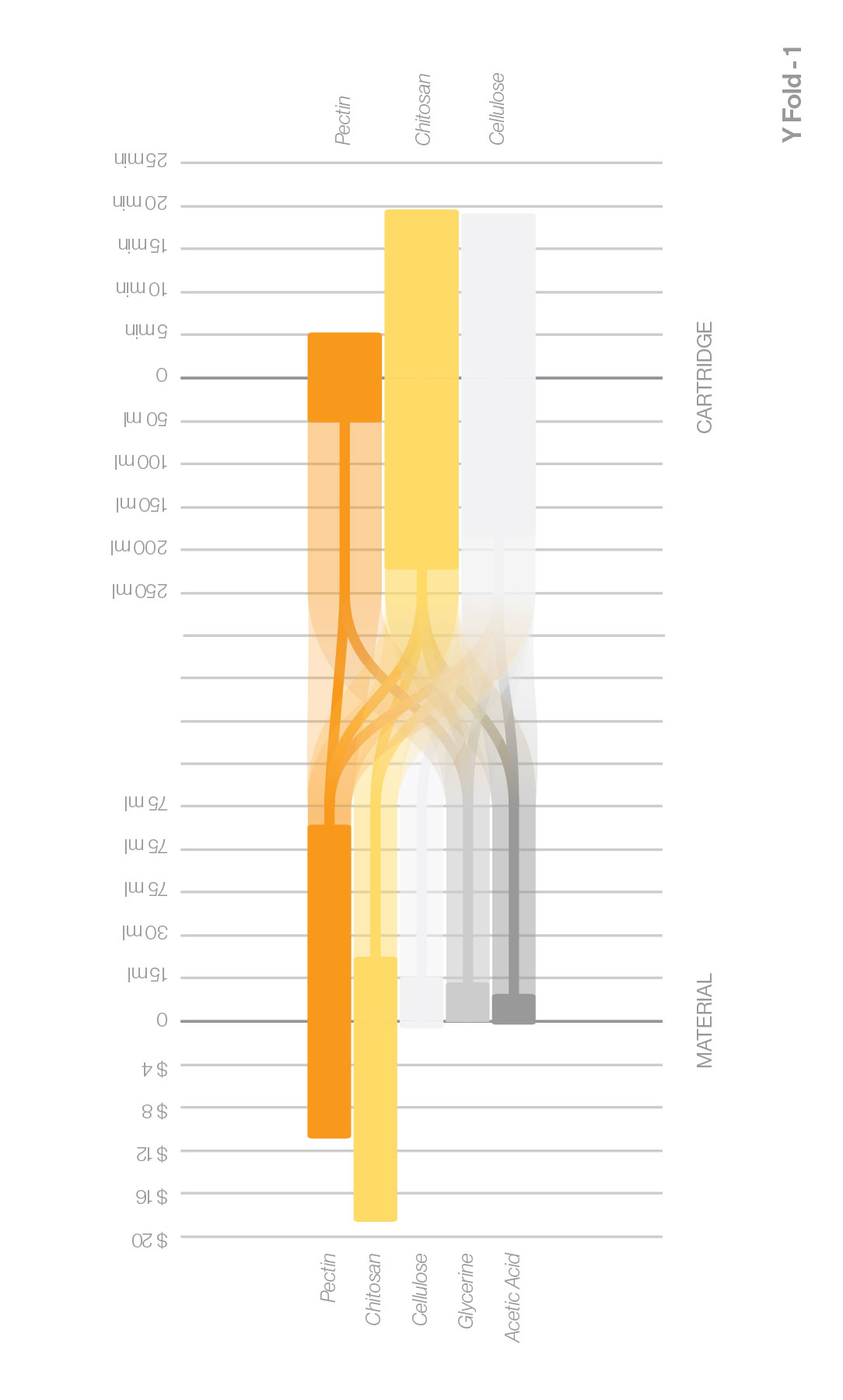
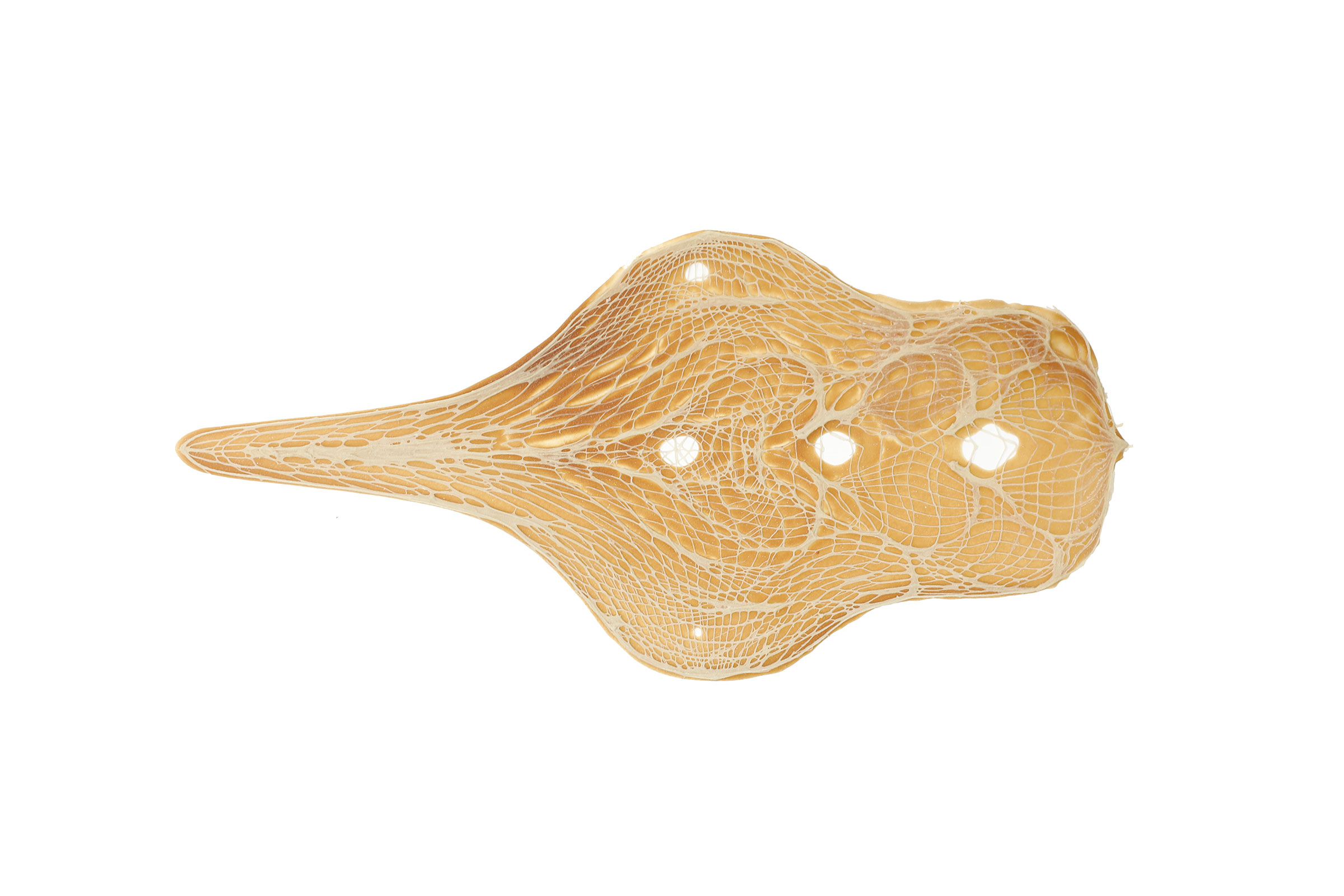




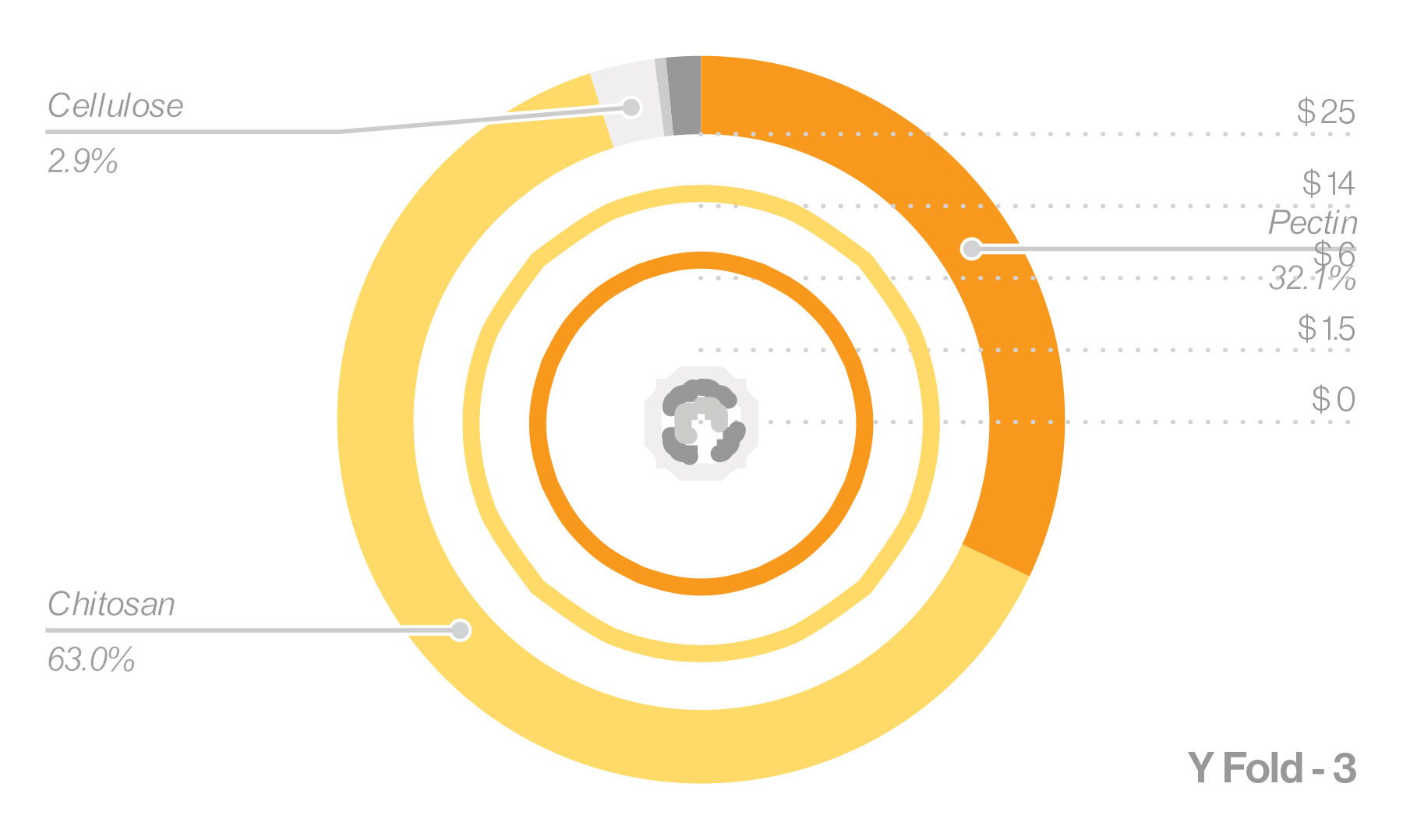
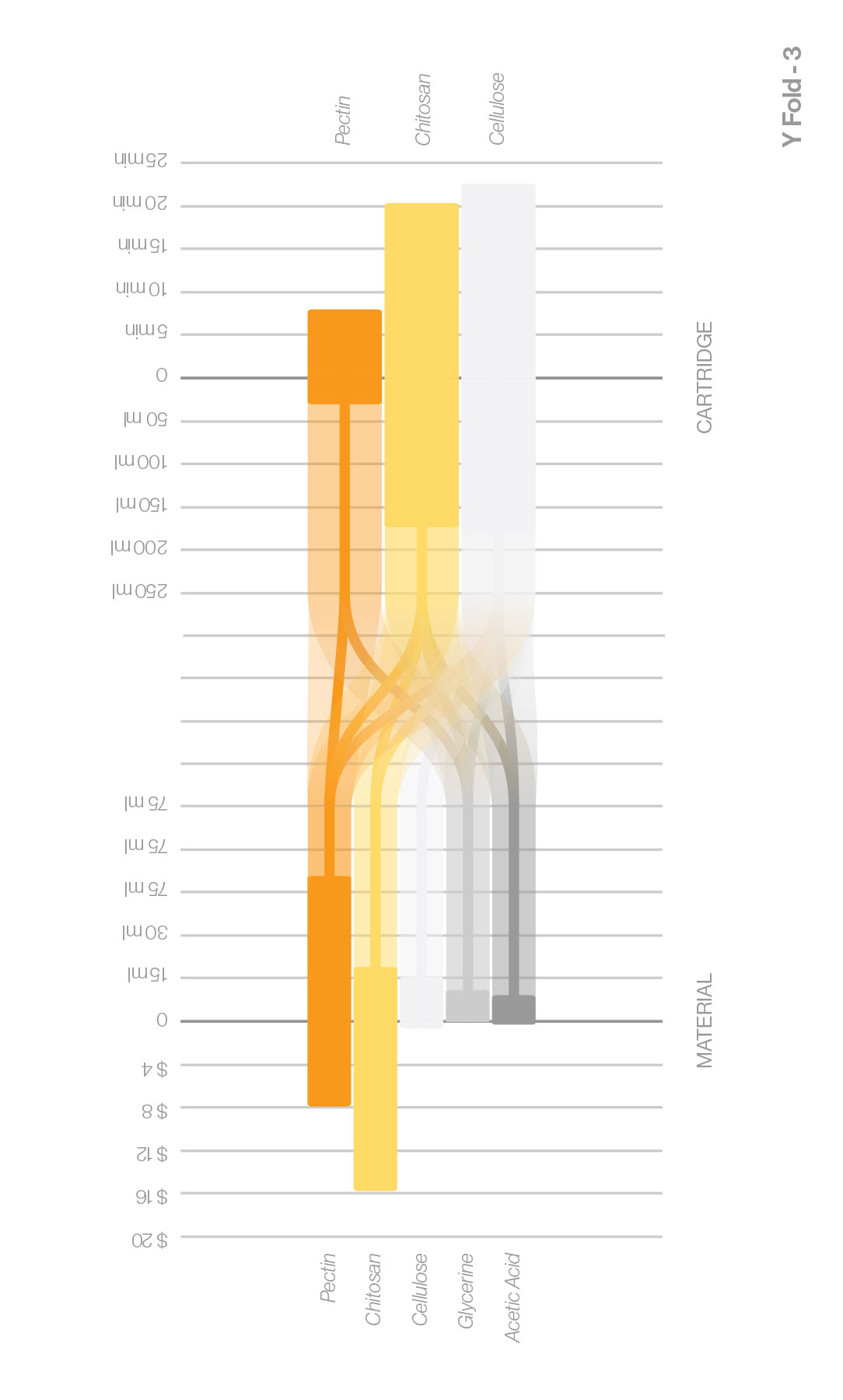
Figure III: The cellulose surface layer is generated to align to specific vectors that encourage creasing the surfaces along predefined ridges.The center lines of each print have a region of pectin infill printed above the cellulose lattice. Regularly spaced holes on the print allow the surfaces to be clamped and joined together.
+
Y Fold
These experiments examine how radially aggregated and folded biopolymer surfaces may deform over time. A series of bilaterally symmetric prints are composed of a pectin chitosan infill base layer with a cellulose lattice surface layer. The cellulose surface layer is generated to align to specific vectors that encourage creasing the surfaces along predefined ridges. The center lines of each print have a region of pectin infill printed above the cellulose lattice. Regularly spaced holes on the print allow the surfaces to be clamped and joined together. Two sets of 3 identical prints are clamped along the wetted central pectin spine to adhere all surfaces together. The edges of each of these surfaces are exposed to a humidifier and creased along the toolpaths.
The visual changes of the aggregate surfaces are tracked for a period of time.
- Exposure to air is recorded during the first month and at 12 months.
- Folded shapes are imaged in plan and angled view.
- Changes in color and shape are visible.
2 folded aggregates of 4 biopolymer surfaces are tested that control for the same materials and print orders but vary the 3-dimensional geometries.
Although the aggregates are shaped symmetrically, they do not deform consistently on either side of a single piece. There is significant color change.
The visual changes of the aggregate surfaces are tracked for a period of time.
- Exposure to air is recorded during the first month and at 12 months.
- Folded shapes are imaged in plan and angled view.
- Changes in color and shape are visible.
2 folded aggregates of 4 biopolymer surfaces are tested that control for the same materials and print orders but vary the 3-dimensional geometries.
Although the aggregates are shaped symmetrically, they do not deform consistently on either side of a single piece. There is significant color change.